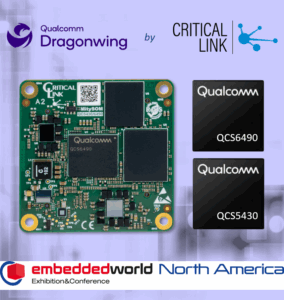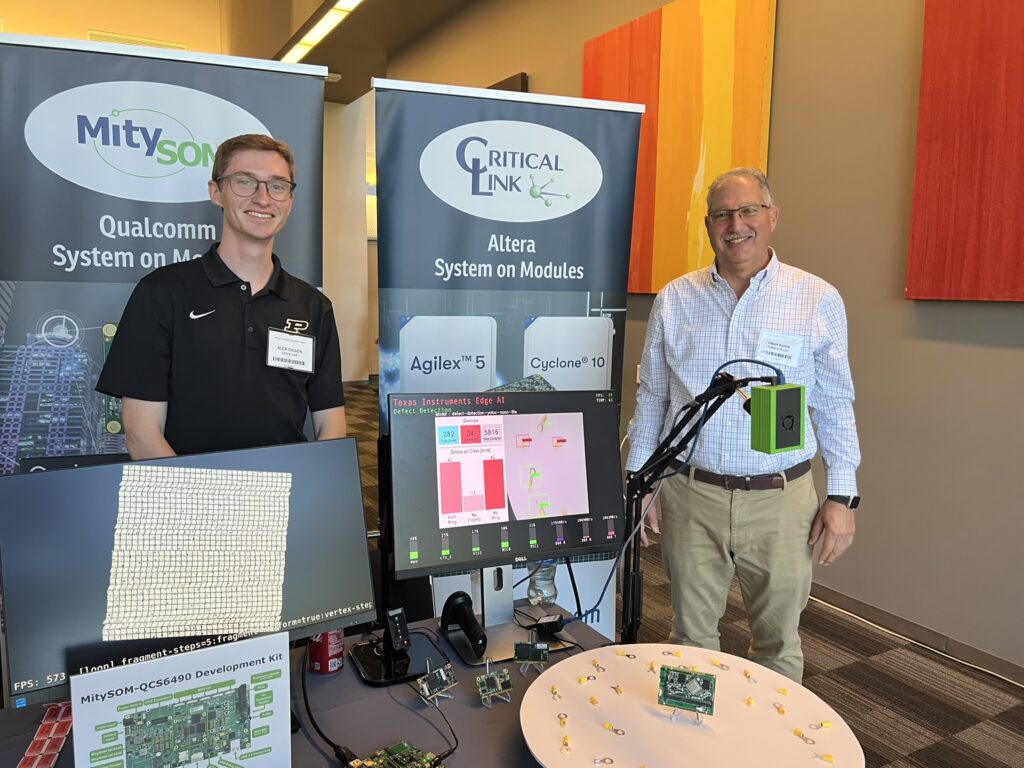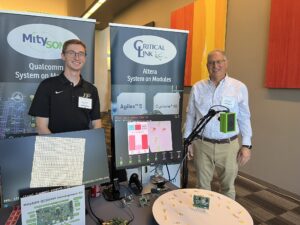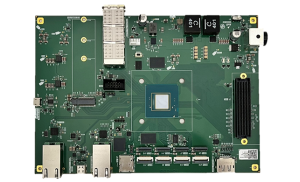
 Add Critical Link booth #3065 to your Embedded World must-see list and check out a live demonstration of AI at the edge using our latest family of Qualcomm-based system on modules!
Add Critical Link booth #3065 to your Embedded World must-see list and check out a live demonstration of AI at the edge using our latest family of Qualcomm-based system on modules!
The MitySOM-QC6490/QC5430 family is based on Qualcomm® Dragonwing™ QCS6490 and QCS5430 processors. These system on modules deliver a combination of multi-core CPU, GPU, and VPU processors, a host of memory options, on board power supply, and a range of high-speed interfaces all in a 45mm x 45mm package. Developers also gain access to the Qualcomm AI Hub, a toolkit offering examples for speech recognition, image classification, text generation, and many other common AI applications.
The new MitySOM-QC6490 system on module will be running a series of live AI vision-based demos in Critical Link’s booth at Embedded World. The demos leverage open source and proprietary models performing single-camera depth estimation, facial recognition, pose estimation, and more. Critical Link will be meeting with interested companies about real-world applications of these capabilities and accelerating development to achieve first-to-market status using the MitySOM-QC6490.
All of Critical Link’s MitySOM solutions are designed for high performance industrial applications. Customers can count on long term availability, quality, and design maintenance. Our engineering and production teams are based in the US, and we provide a level of support that is unmatched in the industry. Learn more about what sets Critical Link apart: https://www.criticallink.com/the-critical-difference/.
Embedded World North America is November 4th to 6th in Anaheim, CA. Register today using Critical Link’s promo code CRITIC25, and be sure to visit us at booth #3065. While there, scan your badge for a chance to win a MitySOM Development Kit of your choice.
Not going to Embedded World? Visit www.criticallink.com to explore our available products and engineering services, or reach out to us directly anytime at info@criticallink.com to discuss how we can support your next project.


 We’re excited to get to St Louis this week for another
We’re excited to get to St Louis this week for another 
 Thank you to the
Thank you to the 
 Join Omar Rahim and Critical Link in Michigan on September 18! Learn about leveraging Asymmetric Multiprocessing and
Join Omar Rahim and Critical Link in Michigan on September 18! Learn about leveraging Asymmetric Multiprocessing and 





